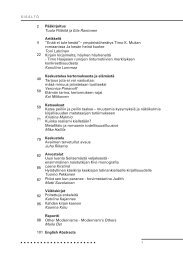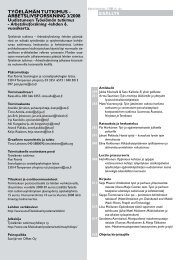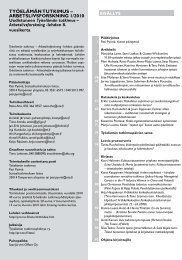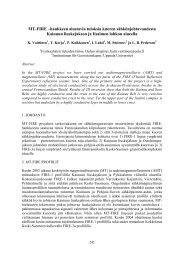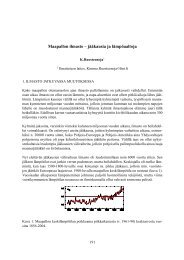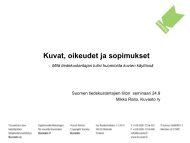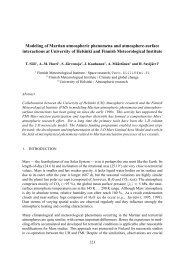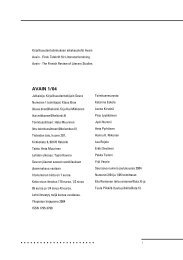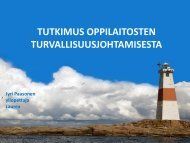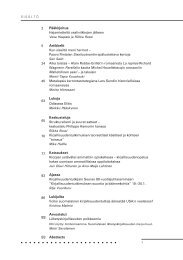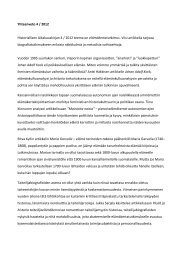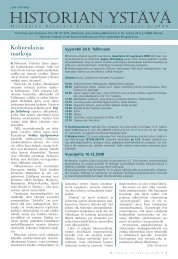Avain 4/2008
Avain 4/2008
Avain 4/2008
Create successful ePaper yourself
Turn your PDF publications into a flip-book with our unique Google optimized e-Paper software.
esseetrects the choice of texts to other cultures. When the Foreign is not of primaryinterest in the selection, contraints concerning “fidelity” to the source text andthe invisibility of the translator are not the most important criteria in translationeither. (2000, 75-76.)In her terms, my translations are “reverent,” where the Foreign “is held in esteem andrespected” (2000, 64). 6At the same time, however, I want to provide my imagined English-speaking audiencewith an aesthetic experience which is as similar as possible to how I experience thework in Finnish. 7 So my first question is whether to transfer that world into a worldmore familiar to the target audience (e.g., Janne Reinikainen’s recent decision at theFinnish National Theater to set Gogol’s Reviisori [The Inspector General] in Finlandrather than Russia) and attempt to induce a similar effect on the audience as the originalaudiences might have experienced or whether to preserve the foreign setting with itsinevitable distancing.For most of my own drama translations, preserving the foreign setting is the mostobvious choice. Indeed, I got into drama translation when I decided to try my hand attranslating Juha Lehtola’s Othellohyrrä, a rewriting of Shakespeare’s Othello set in Helsinki,because I thought this specifically Finnish rewrite deserves a wider audience. TheFinnish setting is an equally integral part of most of the other works I’ve translated. Ofthe plays under discussion here, Olga is most like Othellohyrrä in this respect, especiallyin the title character, who like others of her generation, is very tied to the land. 8But there was one time when I questioned whether keeping the Finnish setting bestserved the play I was translating. Perhaps not uncoincidentally, this was a translation Iwas doing for a specific performance, Rakkaudesta minuun for a festival of Finnish playsdone by the Lit Moon theater company (Santa Barbara, California) in the summer of2007. Rakkaudesta minuun tells the story of a young girl, Sylvia, and her parents, herfather a busy television psychologist and her mother, an unfulfilled interior decorator.The plot revolves around the exploits of the parents (both have affairs), and the child’sefforts to get attention from the adults in her life. My first instinct when I read the playwas that for the translation to work it had to be set in Santa Barbara; 9 otherwise it wouldbe too easy for the audience to simply dismiss these selfish parents as “Finnish,” inother words, “not us,” and the whole point of the play would be lost. American parentsof the same class have the reputation of smothering their children with activities whileemotionally ignoring them like Krogerus’s parents, and I wanted the translation to beas immediate and real to the target audience as it had been to the original. The Americanfestival organizer, along with the Finnish director, did not agree, and we ended upkeeping the Finnish setting. 1042Kirjallisuudentutkimuksen aikakauslehti AVAIN • <strong>2008</strong> • 4




